Minnesota is home to a wide variety of mushrooms, known for their unique blend of textures and flavors. From the common white button mushrooms to the rarer and more flavorful chanterelles and porcinis, Minnesota has something to offer everyone.
There are two ways you can get fresh mushrooms in Minnesota. One, check a local farmers market or two, get your foraging gear and head out to the woods. Whichever method you prefer, here are common fungi in MN and how to identify them.
List of Edible Mushrooms in Minnesota
1. Chanterelles
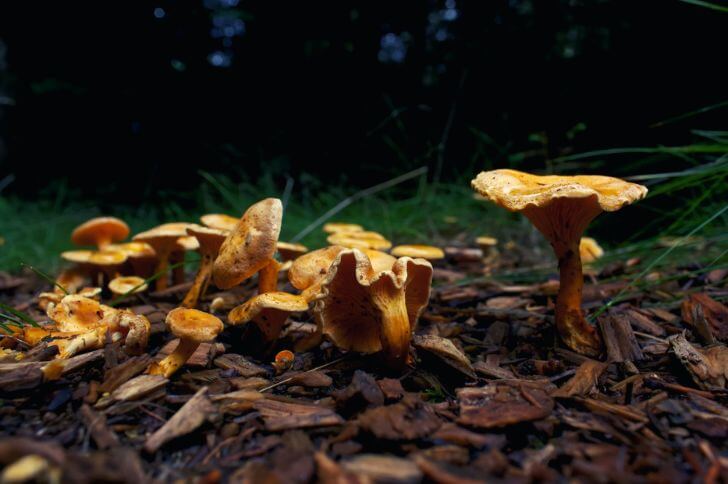
Cantharellus cibarius – Golden chanterelle
Cantharellus cibarius is a highly sought-after delicacy among mushroom enthusiasts. These mushrooms have a distinct trumpet-like shape and a vibrant yellow color that makes them easy to identify. They grow in soil rich in organic matter and are typically found under oak or coniferous trees.
Cantharellus subalbidus – White chanterelles
White chantrelles are another common type of edible mushrooms in MN. Despite its name, it is actually pale yellow or cream-colored and has a trumpet-shaped cap with ridges on the underside. This unique mushroom can be found growing in damp forests and woodlands during late summer and early fall.
The White Chanterelle is highly sought after for its delicate flavor and meaty texture. It can be used in a variety of dishes such as soups, stews, sauces, and risottos.
Craterellus tubaeformis – Winter chanterelles
Craterellus tubaeformis, also called winter chanterelle or yellowfoot, is a species of mushroom found in Minnesota. It can be identified by its trumpet-shaped cap and its yellow color. Unlike the golden chanterelle above, the winter chanterelle is grayish underneath.
In Minnesota, the winter chanterelle can be found growing on the forest floor under leaf litter and decaying wood. They are often found near oak trees and other hardwoods. You’ll love this chanterelle’s nutty flavor.
2. Lumpy Bracket (Trametes gibbosa)
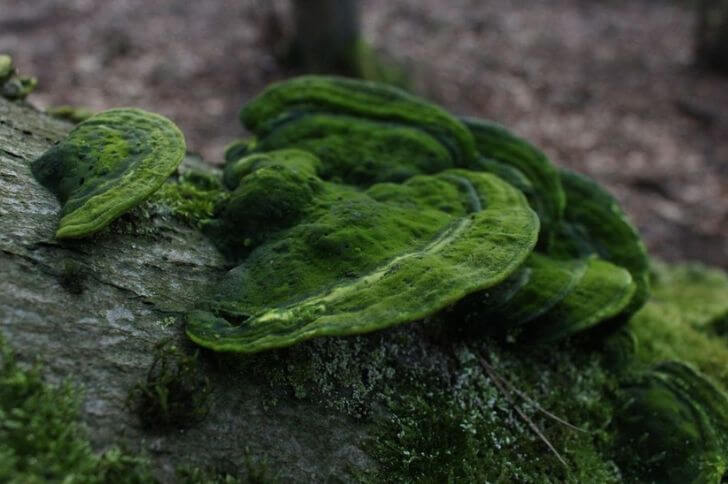
source: maryinthewild
Trametes gibbosa, common name lumpy bracket, is a type of bracket mushroom that can be found growing on tree trunks and logs. It belongs to the family Polyporaceae, which is known for their tough and woody appearance.
The physical characteristics of lumpy brackets are distinct and easy to recognize. The cap grows up to 7.8 inches wide and has a distinct fan-shape with concentric rings on its surface.
The color is whitish but may appear green due to green algae. Underneath, like most shelf mushrooms, lumpy brackets have pores. You can find them around sycamores and beech.
3. Giant Puffball (Calvatia Gigantea)
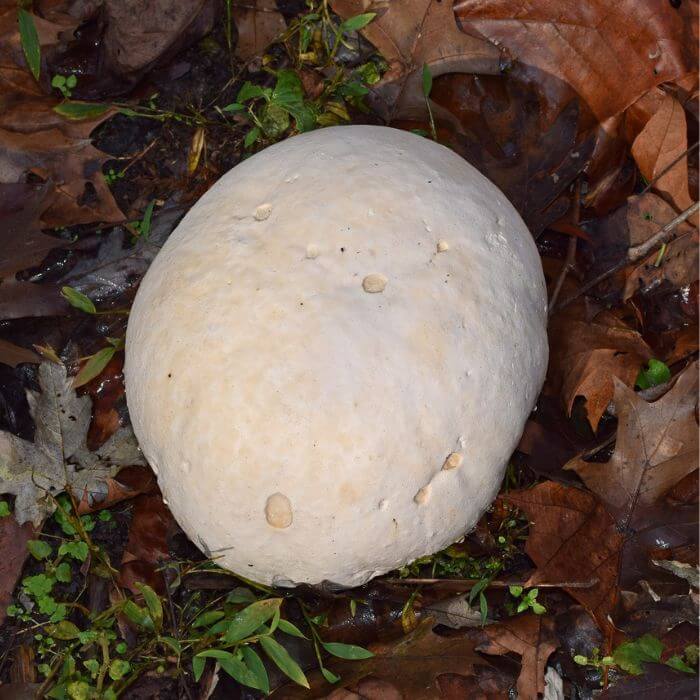
What are the puffballs of Minnesota? Giant puffballs are common in the North Star State. It is a fascinating and edible fungus that can grow up to three feet in diameter.
Firstly, the size of a giant puffball is one of its most distinguishing characteristics. As previously mentioned, it can grow up to three feet in diameter which makes it hard to miss!
The fruiting body itself has a round or oval shape with no obvious stem attached. Additionally, the outer surface is typically white, beige or light gray when mature.
These puffballs are edible when young. Slice in half and check the flesh. It should be white and firm. You can make pizza or fry.
4. Fomitopsis mounceae
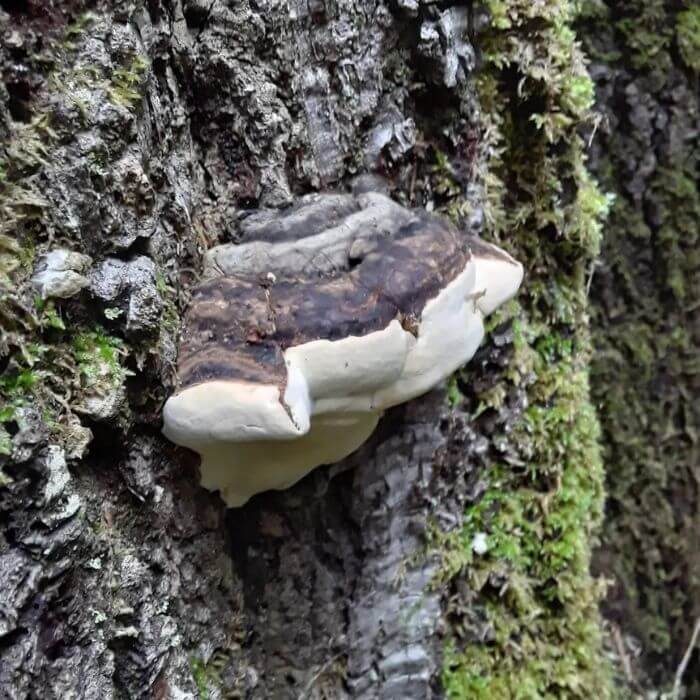
source: elkgrovemycology
Often mistaken for the red-belted conk, the fomitopsis mounceae is a species of wood-decaying fungi that belongs to the family of Fomitopsidaceae.
To identify this shelf fungus first check the size and shape of the fruiting body. The Fomitopsis mounceae has a large, woody bracket-like structure with a broad top surface that can grow up to 9.4 inches wide.
Secondly, observe the color and texture of the fruiting body. It has a reddiish-brown surface with bands at different stages of growth that give it a distinctive appearance. The underside is whitish or pale yellow with no bands.
5. Clitocybe Robusta
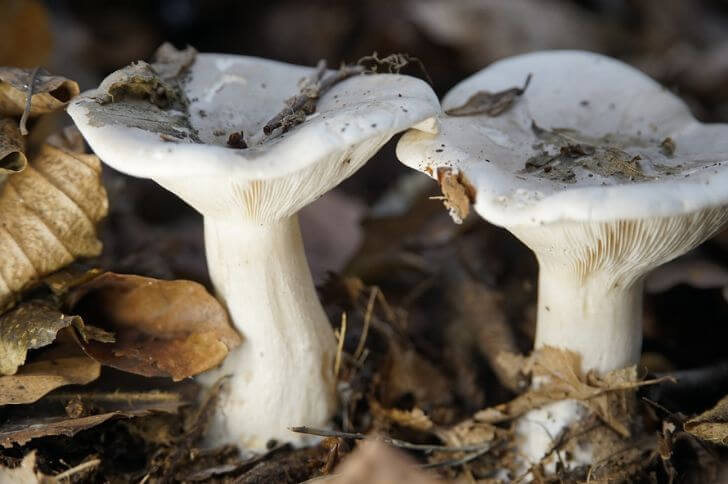
What are white mushrooms in Minnesota? Clitocybe robustas are white summer and fall mushrooms that fall under the clitocybe genus. It has an all white fruit body with a cap that is 2.4-7.8 inches in diameter.
The gills underneath its cap are white, close together, and run down the stem. As they age they turn pale brownish.
Also this white MN mushroom has a distinctive sweet smell that resembles maple syrup or burnt sugar. However, note some may have a slight foul smell. Flesh is white and does not change.
6. Dryad’s Saddle (Cerioporus squamosus)
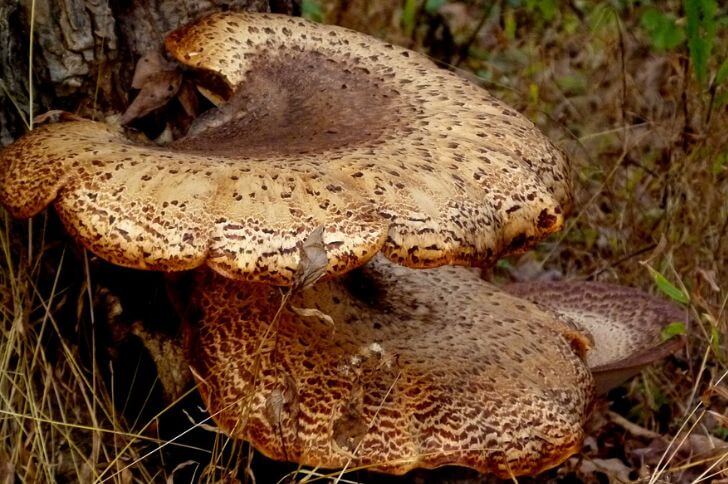
Large and scaly, the dryad’s saddle is an unmistakable mushroom that fruits in spring. It’s often found growing in layers on dead wood.
Also known as Pheasant Back, it gets its name from the brown scales that resemble the feathers of a pheasant.
The cap of this mushroom ranges in size from 2.5-12 inches. The underside of the cap has small pores, instead of gills, which release spores when mature.
Dryad’s saddle has been listed as a choice edible. However for first timers to sample a small portion first.
7. Shrimp of the Woods (Entoloma abortivum)
Entoloma abortivum, colloquially called shrimp of the woods or aborted entoloma, is a unique and fascinating mushroom that has captured the attention of many foragers and nature enthusiasts.
With its distinctive distorted shape, this cute mushroom is as a result of entolomas and honey mushrooms merging.
One of the key features that sets shrimp of the woods apart from other mushrooms is its unusual growth pattern. Instead of forming normal convex caps like its parents, this species produces bumpy caps.
These structures are actually abortive fruiting bodies – incomplete versions of what would typically grow into larger caps if conditions were right. Shrimp of the woods are edible
8. Common Puffball (Lycoperdon perlatum)
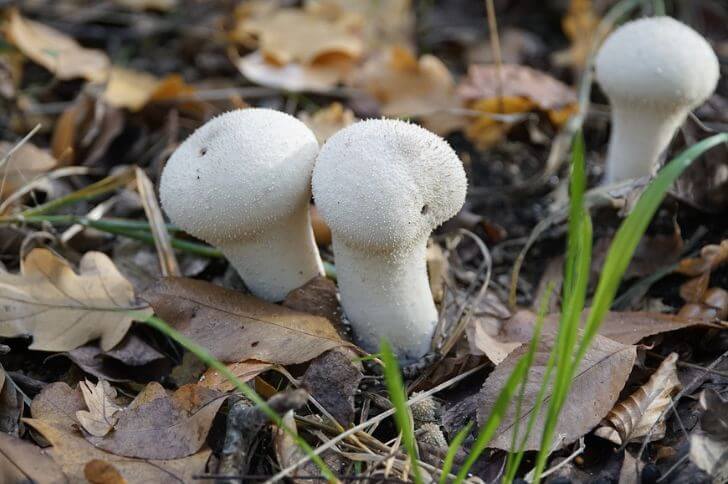
Lycoperdon perlatum is a white mushroom of many names. You may know it as the warted puffball, common puffball or gem-studded puffball.
It’s common in Minnesota from late spring to fall. The mature fruiting body of the mushroom typically ranges from 1.3-3.7 inches in diameter with an inverted pear shape.
As it ages, small spines develop on the surface which give it a “gem-studded” appearance.
As it ages, the fruit body changes to brownish and the spines fall off. Like other puffballs, they are edible when young. They taste great fried.
9. Chicken Fat Mushrooms (Suillus americanus)
Chicken fat mushrooms or suillus americanus is one of the stickiest mushrooms in Minnesota. Often found among pines, this yellow mushroom grows in dense clusters.
One of the distinctive features of chicken fat mushroom is its slimy or slippery cap surface. The cap can range from 1.2-3.9 inches in diameter and is usually yellowish in color. The underside has small pores, which release spores when matured.
Are chicken fat mushrooms edible? Yes, but the slimy surface puts off most mushroomers. If you are looking for something less messy and tastier, try the morels below.
10. Morels
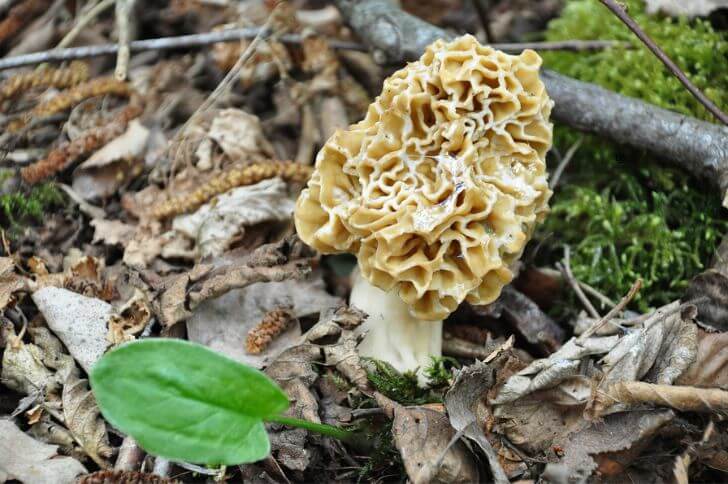
Common morel varieties in MN include:
Yellow morels:
To correctly identify yellow morels there are a few key characteristics to keep in mind. These mushrooms have a distinctive honeycomb-like cap that is usually light brown or pale yellow in color. The caps can range in size from one to six inches and are often hollow inside.
Another important feature of this morchella is its stem, which is typically white or cream-colored and covered in ridges.
Black morels:
Here are some tips to help you identify a black morel with greater certainty. Firstly, it’s important to know that this morel has a distinctive cap that resembles a netting pattern.
The caps can range in color from dark gray to black and tend to be elongated rather than round like other morels.
Another identifying feature of Morchella elata is its hollow stem which is attached directly to the cap.
Half-free Morels (Morchella punctipes)
Half-free morels have a tall and slender stem with a cap that ranges from light grey to dark brown. The cap also features deep pits and ridges that give it an appearance similar to honeycomb.
When can you find morels in Minnesota? They appear earlier in Southern Minnesota, starting from April, while in the northern region they start popping later. Always check after the first heavy rainfall.
11. Oyster Mushrooms
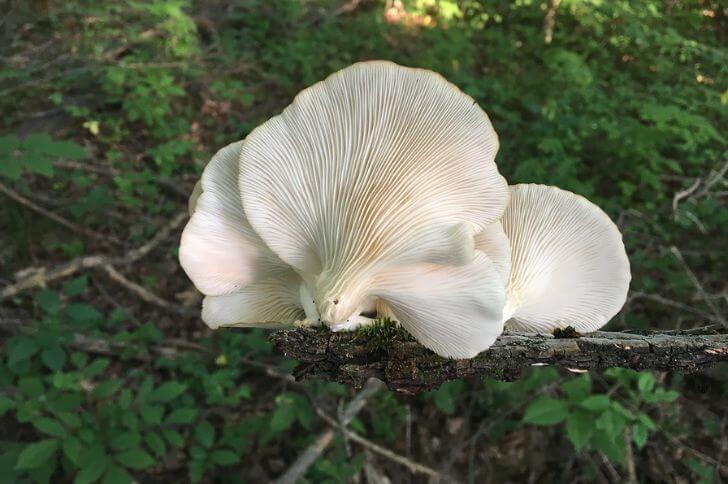
Oyster mushrooms are one of the most common mushrooms in Minnesota. They are easy to cultivate and with a good kit you can grow them at home.
There are various varieties you can grow, most commonly the pink, white and blue varieties. Their fruiting bodies are similar. The caps themselves are often wavy and slightly curled at the edges, resembling an oyster shell.
Be sure to also check for gills on the underside of the cap: oyster mushrooms have gills that run down the length of the stem.
12. Chicken of the Woods
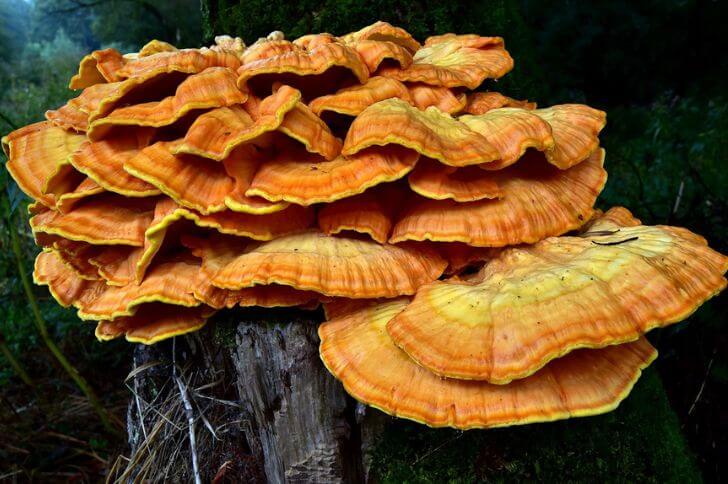
If you are looking for a good chicken substitute, the chicken of the woods won’t disappoint. They are easy to identify even for novice foragers.
Firstly, chicken of the woods has a bright yellow-orange color with soft, fleshy caps that grow in overlapping clusters.
The caps are usually broad and fan-shaped, with a smooth surface. Secondly, this mushroom grows exclusively on dead trees, primarily oak but also on other hardwoods such as maple or cherry.
It can often be found at the base of trees or along fallen logs during late spring to autumn .
Thirdly, this yellow Minnesota mushroom has a mild flavor and tender texture when cooked properly.
13. Purple-gilled laccaria
Are there purple colored fungi in MN? Purple gilled laccaria is a beautiful purple mushroom species that can be found under hardwoods in.
It is named after its purple-colored gills and cap, which fade to grayish-white as it matures. This unique coloring makes it easy to identify, even for novice mushroom hunters.
The cap of the purple-gilled laccaria can reach up to 8 inches in diameter and its surface is smooth and dry, with a deep violet or purple color that fades towards the edges.
The stem is also colored in a similar shade of purple and has a fibrous texture, making it easier to spot among other forest debris.
If you are looking for this species during your next forest hike, keep an eye out for areas with mature deciduous trees such as oaks. Purple-gilled laccaria are great in sauces and soups.
14. Chaga (Inonotus obliquus)
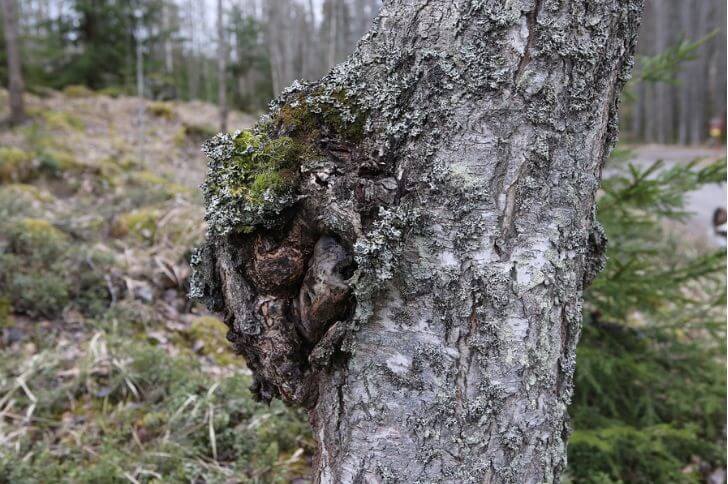
Chaga is a type of mushroom that has been used for centuries in traditional medicine due to its numerous benefits.
However, identifying this mushroom can be challenging as it grows on birch trees and looks quite different from other types of mushrooms. To accurately identify chaga, there are several key characteristics to look out for.
Firstly, chaga has a black, rough exterior that resembles burnt charcoal. It is also very hard and can be difficult to break apart. When cut open, the inside of the mushroom is a rusty brown color with distinct layers that resemble tree bark.
Another important feature to consider when identifying chaga is its location. As mentioned earlier, this mushroom grows mostly on birch trees.
15. Hen of the woods
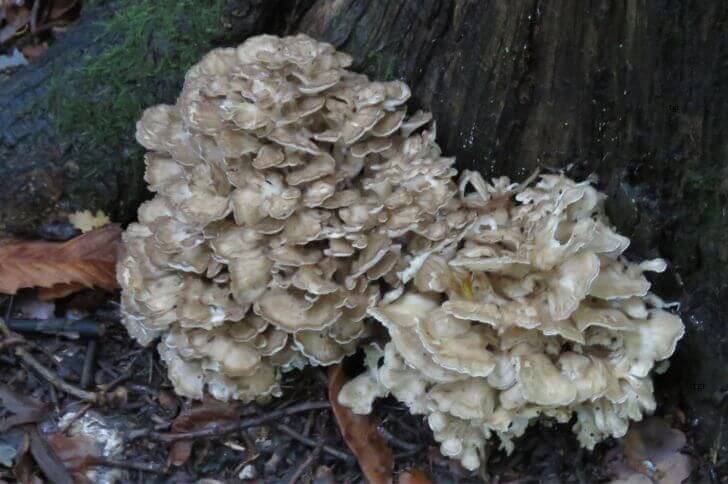
Hen of the Woods is a delicious and nutritious wild edible that grows in clusters at the base of oaks.
This Minnesota mushroom has fan-shaped caps that overlap each other like petals on a flower.
The color can range from brownish-gray to light tan with light-colored edges. You’ll often find them growing near oak trees but they can also grow near other hardwoods such as maple and elm.
Hen of the woods are edible. Note, these Minnesota mushrooms have large fruiting bodies that can weigh up to 10 pounds. Thankfully maitakes can be dried and used later.
16. Lion’s Mane
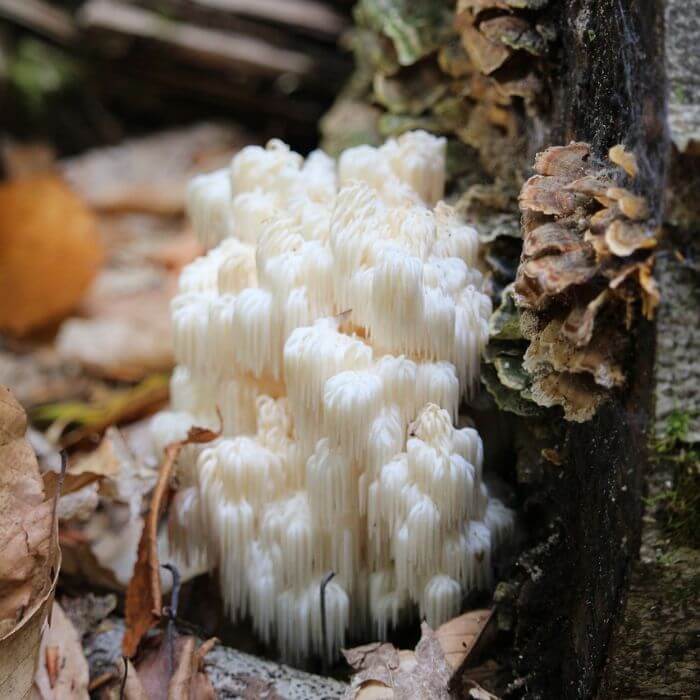
Lion’s mane are another type of wild white mushrooms of Minnesota. Hericium erinaceus get their name because their small fruit bodies resemble the mane of the king of the jungle. These mushrooms have long, flowing white spines and grow in clusters on trees like beech or maples.
These white mushrooms are edible. Lion’s mane pair well with most ingredients. Try mushroom tacos!
17. Old Man of the Woods
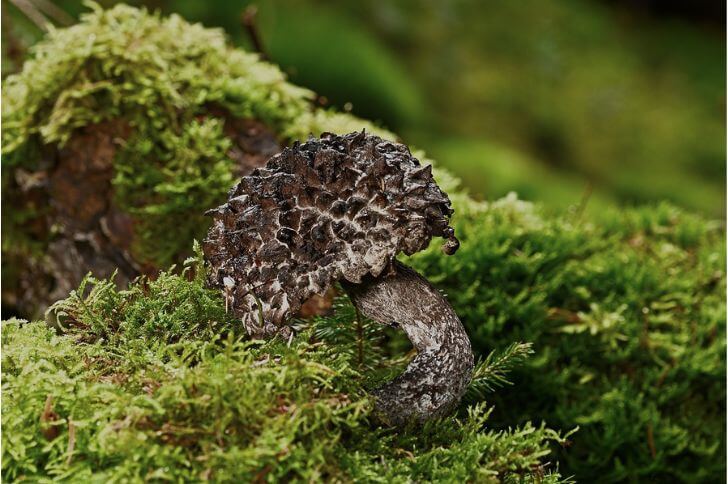
Strobilomyces floccopus is one of the weirdest looking mushrooms on this list. English name old man of the woods, it belongs to the boletaceae family and is related to other mushrooms like the king bolete.
Old man of the wood grows to about 5 inches. Fruiting body is unmistakable. Its hemispherical cap appears grayish black due to the numerous scales on its surface. Like its cousins, it has pores underneath instead of gills. Stalk is also scaly and rough looking.
If you want to eat this MN mushroom, the key is to harvest young species. You’ll love the portabello-like taste.
18. Cauliflower mushrooms
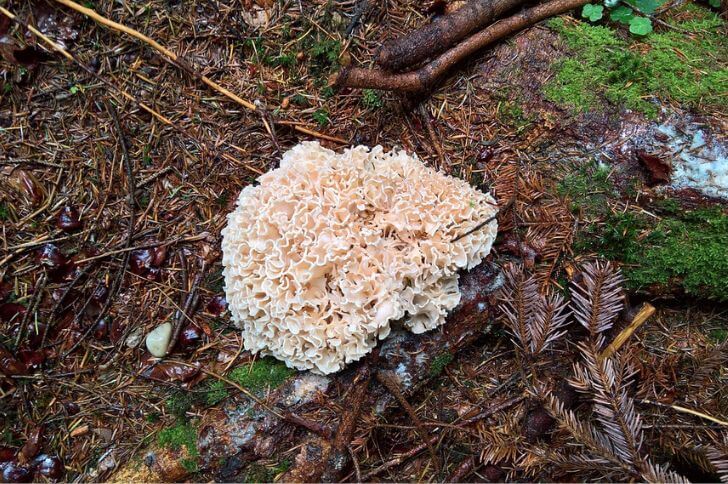
With their brain-like shape and large body, cauliflower mushrooms are a prized find among foragers. Their unique appearance, delicate texture, and earthy flavor make them a must-try ingredient in any kitchen.
They grow in clumps on the ground and on the roots of trees, particularly decaying oak. The fungus can range in color from white to cream or yellowish-brown.
Another way to identify cauliflower mushrooms is by their distinctive shape – they have large, ruffled clusters that resemble cauliflower florets. Another key identifier is their lack of gills or pores on the underside of the caps. Instead, they have smooth surfaces with tiny bumps or ridges. You can find them during wet summers and one mushroom is large enough for several meals.
Inedible Mushrooms MN
19. Golden scalycaps (Pholiota aurivella)
Pholiota aurivella is a type of mushroom that belongs to the strophariaceae family. It is commonly called the golden scalycap due to its golden brown caps that have a distinctive convex shape with dark scales.
This species of mushroom has a slimy texture and gills that are adnate, which means they are attached to the stem.
Another characteristic of this mushroom is its stem, which is usually equal in width throughout its length and ranges from 1.2-3.5 tall. These scalycaps are inedible.
20. Yellow Gymnopilus (Gymnopilus luteus)
Favoring the eastern United States, the yellow gymnopilus is a gregarious mushroom that is in the same family as honeys; Hymenogastraceae.
The species is characterized by its hemispherical yellow orange cap which can be hairy on young speceis. Its gills are also orange-yellow and become rusty brown as the mushroom matures.
Another way to identify yellow gymnopilus is to look for it on dead or decaying wood, particularly on hardwoods such as oaks and maples. The fruiting bodies usually appear in the summer/fall season but can be found all year round in warmer climates. Another distinguishing feature of this mushroom is its bitter taste, which may deter animals from eating it.
21. Scarlet cup
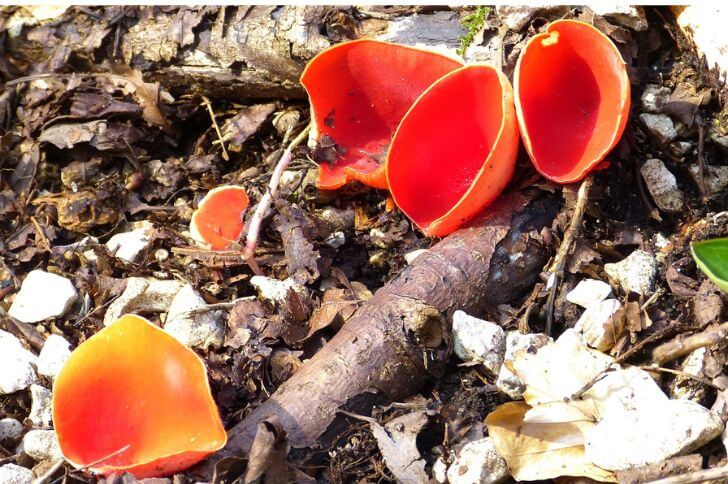
Scarlet cup mushrooms are renowned for their vibrant red color and distinctive cup shape. They can easily be identified by the scarlet-red, cup-shaped caps that curve inwards to form a shallow cavity. The underside of the cap is smooth and usually paler in color than the rest of the mushroom.
The stems, if present, are short and whitish. They often grow in clusters on decaying branches, particularly in damp areas where there is plenty of moisture. These unique features make them easy to spot and identify from other types of mushrooms.
Scarlet cups are inedible.
Final Thoughts:
Minnesota mushrooms are a great local resource for a variety of culinary needs. They can be found in the wild, grown on farms, or purchased from farmers markets and grocery stores across the state.
Not only are they an excellent source of nutrition, but they also provide an opportunity to enjoy nature’s bounty and support local growers and foragers. With many varieties available, there is something for everyone.
sources:
Hi There,
My name is Jenny. I’m the Chief Editor at Try Green Recipes and besides making yummy and healthy foods for my kids, grandkids, and friends. I’m new to the blogging world but I believe what I have to share is unique and will bring joy to your home. If you are adventurous and want try something tasty, let’s get started.

